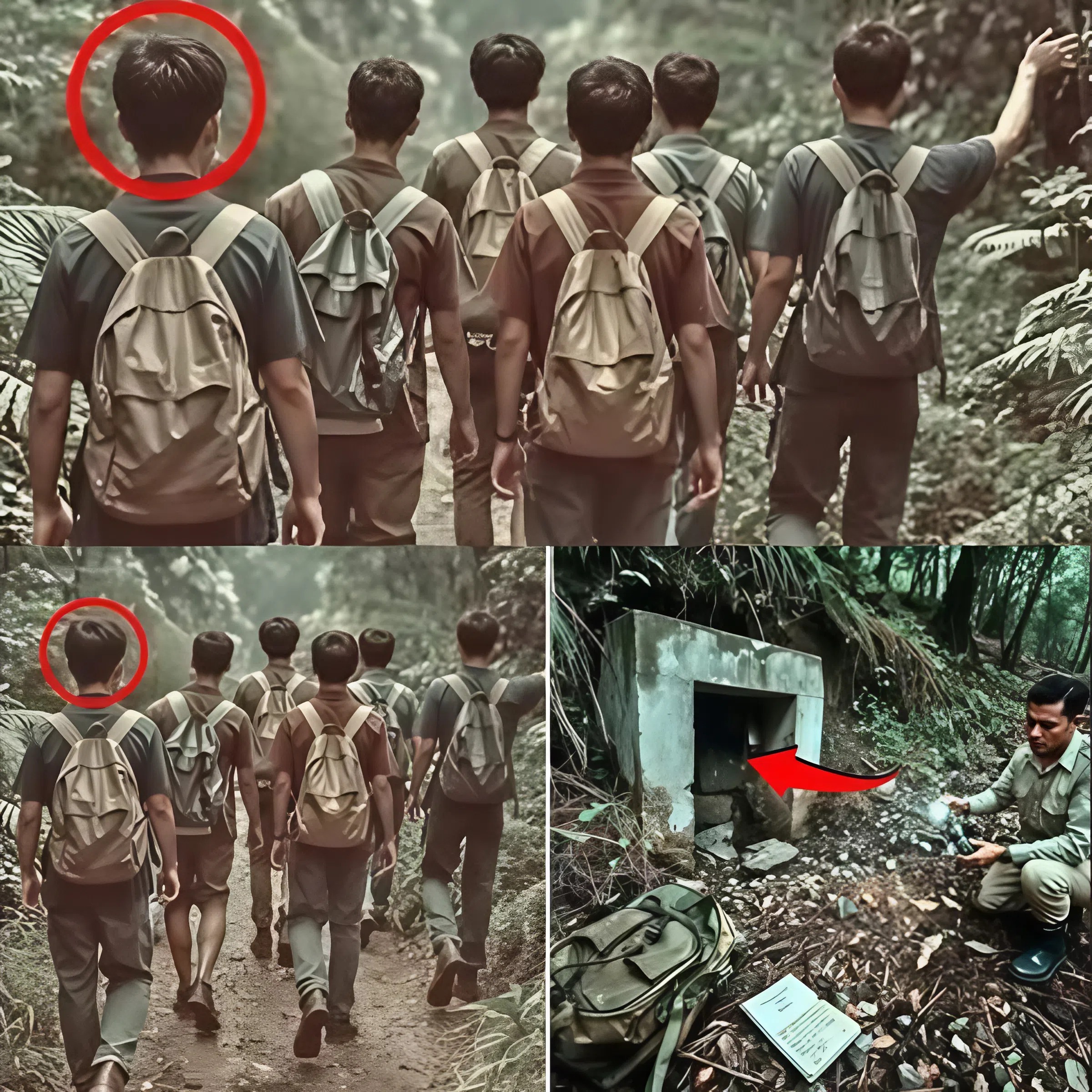A Vanishing Without a Trace

In the summer of 1982, six teenagers set out for the Appalachian mountains on what was meant to be a simple camping trip. They packed lightly—backpacks, snacks, guitars, notebooks, and the casual fearlessness of youth.
Their names—Michael, Sarah, David, Rachel, Aaron, and Lila—became etched into local history not because of what they achieved, but because of what never returned.
By Monday morning, their families expected them home. By Tuesday, panic spread. Search parties mobilized, helicopters hovered, dogs tracked. For weeks, the forest was combed.
Nothing.
Not a footprint. Not a torn jacket. Not a single clue.
The disappearance of the six became one of the most enduring mysteries of the region, a chilling reminder that the wilderness swallows more than just trees.
The Decades of Silence
For years, the families fought against despair. Some kept their children’s bedrooms untouched, as if waiting for them to walk back through the door. Others moved away, unable to live near the forest that had taken everything.
Authorities eventually declared the case cold. Without evidence of foul play, it was left in limbo—an unsolved tragedy, filed away in dusty cabinets.
But locals never forgot. Around campfires, whispers grew:
-
Some swore the teenagers had staged a runaway pact.
-
Others muttered about cult activity.
-
Conspiracy-minded residents whispered about government bunkers hidden deep in the hills.
The forest grew thicker. The story, darker.
And then, thirty-four years later, the silence broke.
The Discovery
In October 2016, an anonymous hiker reported stumbling across something strange while trekking a forgotten trail. Beneath roots and moss lay a slab of cement, weathered and cracked, but unmistakably human-made.
Carved into its surface were six sets of initials.
When officials investigated, they uncovered what appeared to be a sealed entrance—narrow, damp, and partially collapsed. Inside were remnants: rusted zippers, torn straps from backpacks, melted candle wax, and most disturbingly, a notebook.
At first, the notebook seemed like the diary of a carefree trip: pages of jokes, meal plans, doodles, and youthful excitement.
But the final entry changed everything. Written in a different ink, shaky handwriting suggested it was scrawled long after the first pages.
It read:
“The entrance closed itself. And now we are not alone.”
No Bodies, Only Whispers
Despite the discovery, no human remains were ever found inside the structure. The absence of bodies deepened the enigma: where had the teenagers gone?
Investigators noted something else unusual. The air inside was unnaturally heavy, charged with static. Equipment recorded faint distortions—static bursts that some technicians claimed resembled voices, though nothing conclusive could be drawn.
Local police quickly cordoned off the site, citing “environmental instability.” Days later, federal authorities arrived. Within weeks, the entrance was resealed, this time reinforced with steel and stone.
No public explanation followed. Only silence.
Theories That Refuse to Die
The discovery reignited a storm of speculation. Experts, journalists, and amateur sleuths all offered theories:
1. The Cave-In Hypothesis
Some geologists suggested the teens found an abandoned mine shaft, which collapsed, leaving them trapped. But this fails to explain the notebook’s final entry written years later.
2. The Survivalist Theory
A fringe idea argued the teenagers lived underground for a time, leaving behind the cryptic message before succumbing. Again, no remains were found.
3. The Paranormal Angle
Believers in the supernatural claim the teens encountered something unnatural in the forest—whether spirits, entities, or phenomena science cannot explain. For them, the “we are not alone” line is literal.
4. Government Secrecy
The speed with which federal agencies sealed the site gave rise to darker suspicions. Were the six victims of an experiment? Did they stumble on something classified? The lack of transparency only fuels the fire.
Eyewitness Accounts
Those who entered before the site was resealed describe sensations difficult to explain.
A retired ranger recalls:
“I’ve spent my life in these woods. I know the sounds they make. But when I stepped near that entrance, it wasn’t silence—it was presence. As if the air was waiting for me to speak first.”
Another officer confided off-record:
“We set up recording equipment. Playback had distortions—like whispers. Some of us heard names. I quit the force not long after.”
Even locals, living miles away, report strange occurrences. Lights flickering in the forest at night. Laughter echoing where no one stands. A constant sense that the woods are not empty.
Families Still Waiting
For the families, the discovery brought neither peace nor closure.
Rachel’s mother, now in her seventies, said in a rare interview:
“For thirty years, I prayed for answers. Now I wish I hadn’t. To know they were there, and yet to know nothing at all… it’s worse.”
Michael’s brother, who was twelve when the teens vanished, remains convinced something was covered up:
“My brother didn’t just disappear. Something happened in those woods, and someone doesn’t want us to know what.”
The Forest That Remembers
Since 2016, the area around the sealed entrance has been marked “off-limits” by the government. Officially, it’s for safety reasons: unstable ground, risk of collapse.
Unofficially, hikers and locals continue to report strange phenomena. Orbs of light floating between trees. Sounds of footsteps that stop when followed. A heavy silence that presses down on the chest.
Some claim the forest itself is alive, holding its secrets close. “It doesn’t want to give them back,” one old hunter said.
Why This Mystery Endures
The Camp Six case endures because it sits at the crossroads of tragedy, folklore, and the unknown. Unlike solved cold cases, it offers no closure—only more questions.
Why were there initials carved on cement? Who sealed the entrance? How could a notebook contain writing from years after the disappearance?
Most of all—where are the bodies?
The absence of answers has allowed the story to morph into modern myth. It is recounted on podcasts, retold in late-night documentaries, and passed along like a warning: some doors, once opened, should never be touched again.
Conclusion: The Door That Should Stay Closed
Today, the forest is quiet. The sealed entrance lies hidden under layers of roots and moss once again, as if the earth itself is reclaiming its secret. Tourists who wander too close are turned away. Locals avoid the area altogether.
The families still live with their grief, caught between hope and despair. Investigators who once touched the case speak rarely, and when they do, their eyes drift—haunted by memories they cannot name.
No one knows what really happened that night in 1982.
Only this much is certain: the forest remembers. And every so often, when the night is still and the trees whisper, people swear they see a light moving between the branches, as if six young souls are still searching for a way home.



